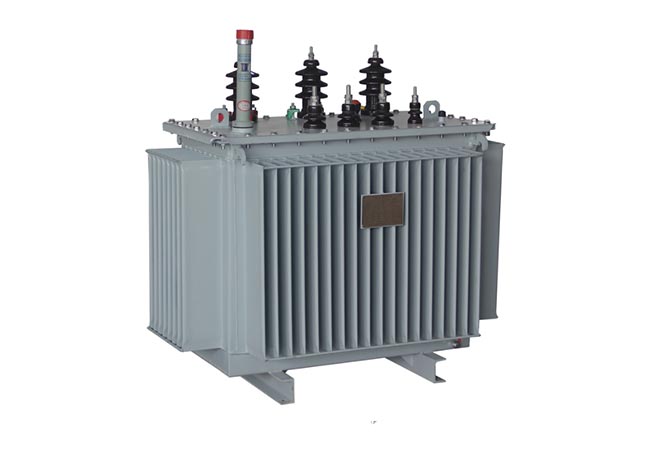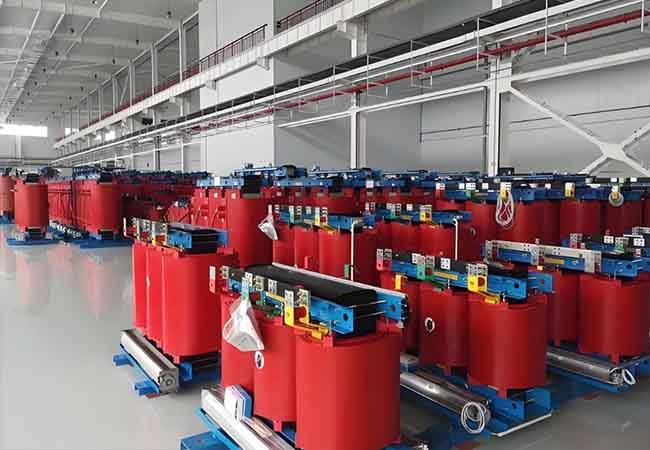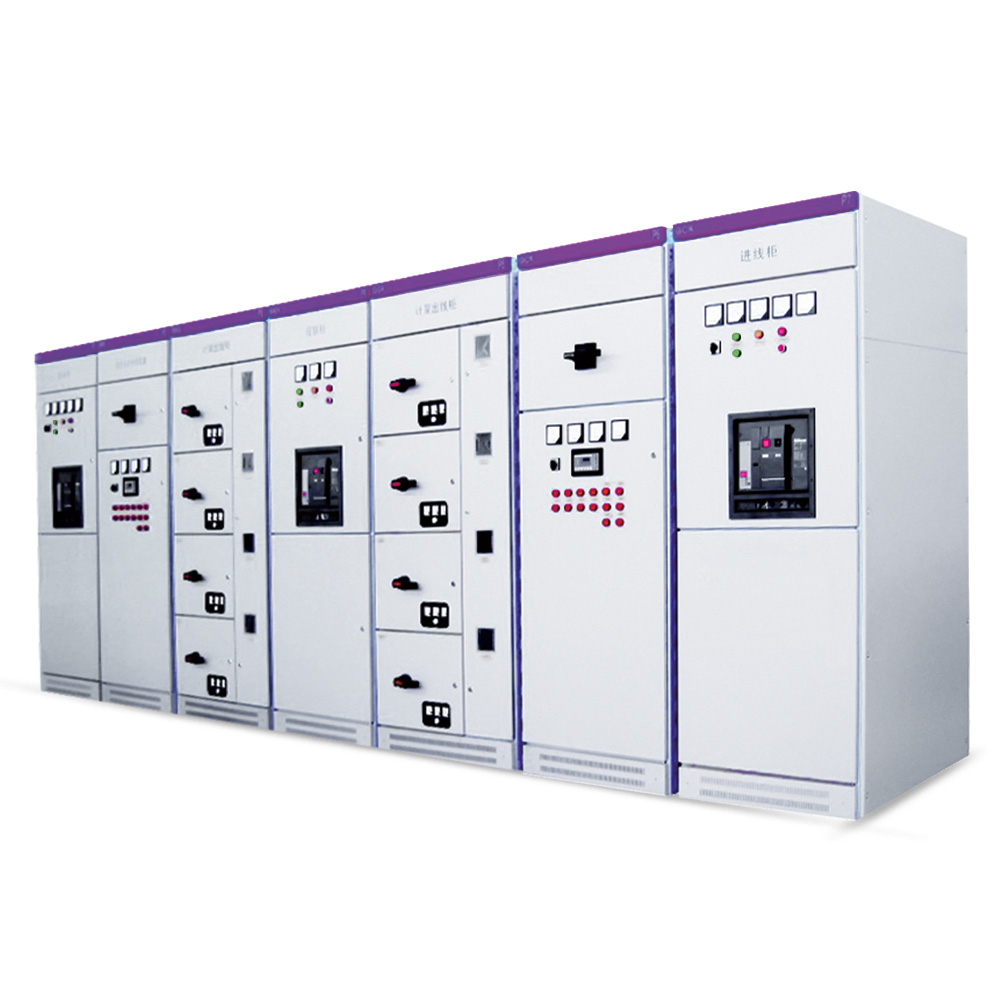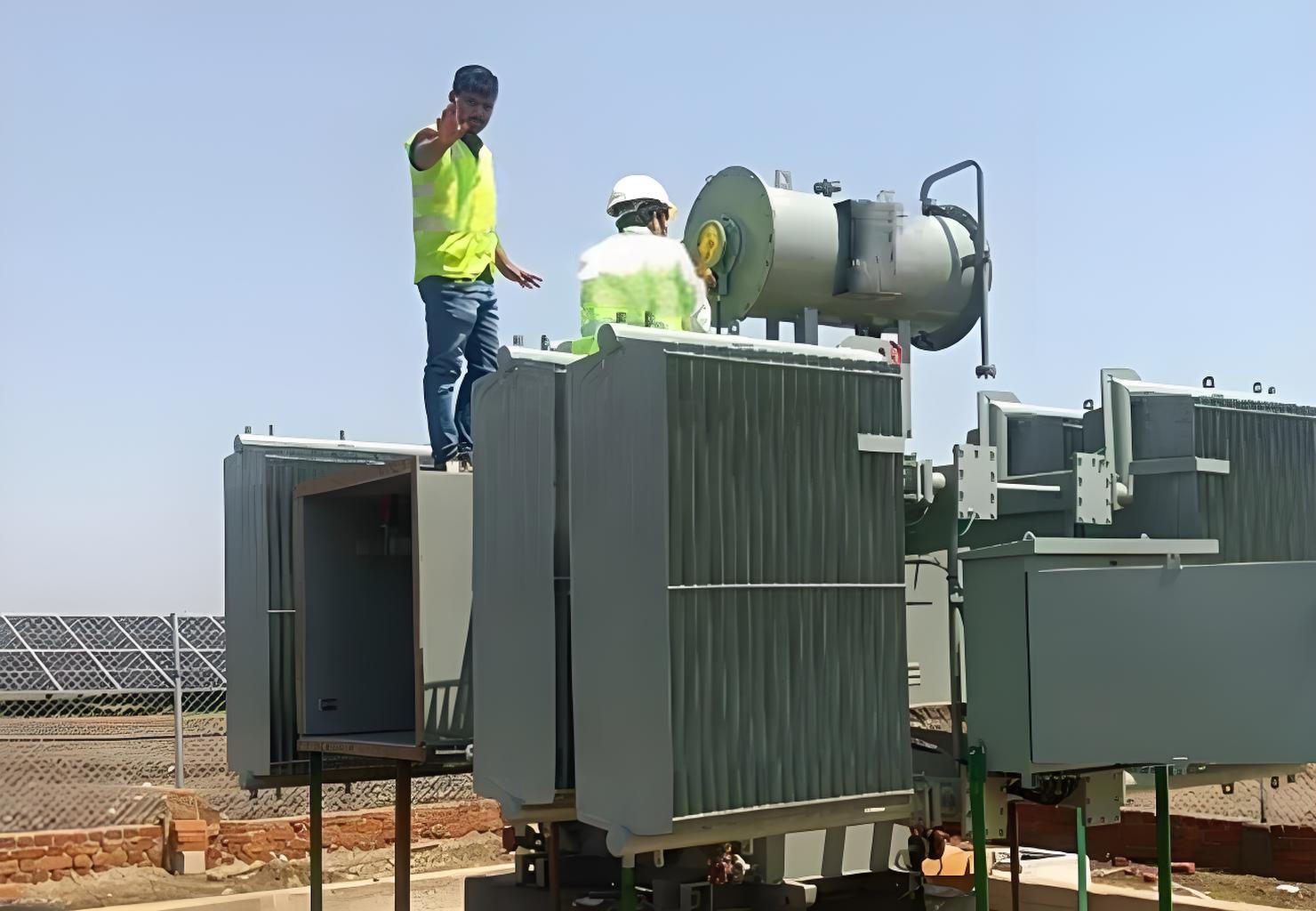Industrial And Commercial Photovoltaic Transformers: Selection, Types And Functions, Help Green Energy Upgrade!
04-28 2025 | By:
Industrial and commercial photovoltaic transformers: selection, types and functions, help green energy upgrade!
In industrial and commercial photovoltaic systems, transformers are indispensable core equipment. It is not only related to the efficient transmission of photovoltaic power, but also directly affects the stability and safety of the system. This article will explain in detail the role, selection principles, common types and characteristics of industrial and commercial photovoltaic transformers to help you better understand and apply this key equipment.
1. The role of industrial and commercial photovoltaic transformers
In distributed photovoltaic power generation systems, transformers are mainly responsible for voltage conversion. After the DC power generated by the photovoltaic module is converted into AC power by the inverter, it is boosted to the grid voltage level by the transformer so that it can be incorporated into the distribution network or directly supplied to the local load. The rationality of transformer selection is directly related to the system’s power conversion efficiency, equipment investment cost, operation and maintenance difficulty, and the overall reliability of the system.
1. Voltage conversion
The power generated by photovoltaic panels is low – voltage DC power, while the grid needs high – voltage AC power. The main function of the transformer is to convert low – voltage DC power into high – voltage AC power suitable for grid access. For example, industrial and commercial photovoltaic power stations usually need to increase the voltage to 10kV or higher to achieve long – distance transmission. Different types of three – phase distribution transformers, such as the three – phase oil – immersed power transformer (Three – phase oil – immersed power transformer) and three – phase dry – type power transformer (Three – phase dry – type power transformer), play a crucial role in this voltage conversion process in the photovoltaic field.

SH15-1000/10-0.4 oil-immersed amorphous alloy transformer
2. Improve power generation efficiency
By optimizing the design of the transformer, the loss in the power transmission process can be reduced, thereby improving the power generation efficiency of the entire photovoltaic system. High – efficiency three – phase amorphous alloy transformers (Three – phase amorphous alloy transformers) are often used in photovoltaic applications to minimize no – load losses and enhance overall efficiency.
3. Adapt to complex environments
Industrial and commercial photovoltaic transformers can operate stably in various harsh environments, whether it is high temperature, low temperature or humid environment, they can ensure the normal operation of the system. Three – phase epoxy – resin cast dry – type transformers (Three – phase epoxy – resin cast dry – type transformers) are known for their excellent resistance to moisture and harsh conditions, making them suitable for photovoltaic installations in challenging environments.
4. Ensure safety
The design of photovoltaic transformers focuses on safety performance such as fire prevention, explosion prevention, and moisture resistance, especially in dry – type transformers, these characteristics are more prominent. Three – phase hermetic dry – type transformers (Three – phase hermetic dry – type transformers) are designed with enhanced safety features to prevent fire and explosion risks in photovoltaic systems.

dry type 10kV distribution transformer
2. Selection principles of industrial and commercial photovoltaic transformers
1. Capacity selection
The capacity of the transformer should be determined according to the maximum output power, system efficiency and load characteristics of the photovoltaic system. Usually a certain margin needs to be reserved to improve the reliability and scalability of the system. When considering three – phase transformers, the three – phase capacity rating (Three – phase capacity rating) is a key factor in this selection process.
2. Voltage level
Select the appropriate voltage level according to the output voltage of the photovoltaic array and the grid access requirements. For example, a small industrial and commercial photovoltaic system may use 380V grid connection, while a large system requires 10kV or higher voltage. Three – phase step – up transformers (Three – phase step – up transformers) and three – phase step – down transformers (Three – phase step – down transformers) are selected based on the specific voltage conversion needs in the photovoltaic grid – connection.
3. Loss and efficiency
Choose transformers with low loss and high efficiency to reduce energy loss during power transmission. Three – phase energy – efficient transformers (Three – phase energy – efficient transformers) are preferred in the photovoltaic field to ensure minimal energy waste.
4. Safety and maintenance
Consider the safety of the transformer, such as fireproof and explosion – proof features, and choose equipment that is easy to maintain to reduce operating costs. Three – phase intelligent transformers (Three – phase intelligent transformers) often come with built – in monitoring and protection systems, which facilitate maintenance and enhance safety in photovoltaic applications.
5. Rated voltage matching
In distributed photovoltaic systems, the rated voltage of the transformer is a basic and key parameter. The rated voltage of the high and low voltage sides of the transformer must match the grid – connected voltage of the system and the rated AC output voltage of the inverter. This is the premise to ensure that the photovoltaic system can be smoothly connected to the grid and operate stably. Three – phase voltage – matched transformers (Three – phase voltage – matched transformers) are specifically designed to meet these voltage – matching requirements.
6. Reasonableness of rated capacity
The rated capacity of the transformer is a key indicator that determines its carrying capacity. In a distributed photovoltaic system, the rated capacity of the transformer should be greater than the sum of the rated capacities of the inverters connected to this transformer. This is because the inverter may generate instantaneous overload or harmonic current during operation. If the capacity of the transformer is insufficient, it may cause the transformer to overheat, damage, or even cause fire and other safety accidents. At the same time, considering the possible expansion needs of the photovoltaic system in the future, it is recommended to leave a certain capacity margin when selecting. Three – phase oversized – capacity transformers (Three – phase oversized – capacity transformers) can be considered to accommodate future expansion.
7. Selection of transformer type
Depending on the installation environment and usage requirements, different types of transformers can be selected for distributed photovoltaic systems.
Indoor installation environment
Dry – type transformers are ideal for oil – free, fireproof, and explosion – proof, and are suitable for indoor installation. It is recommended to use dry – type transformers with SCB10 or above to ensure their energy efficiency and reliability. Pay attention to the heat dissipation conditions, noise level, and safe distance from maintenance personnel of the transformer. Three – phase SCB10 dry – type transformers (Three – phase SCB10 dry – type transformers) are commonly used in indoor photovoltaic installations.
Outdoor installation environment
Box – type transformers integrate transformers, high – voltage switchgear, metering equipment, etc. in one box, which is suitable for outdoor installation. Attention should be paid to its protection level, insulation performance and ability to adapt to harsh environments. In coastal areas or areas with severe industrial pollution, transformers with higher protection levels and corrosion resistance should be selected. Three – phase outdoor box – type transformers (Three – phase outdoor box – type transformers) are designed to withstand outdoor conditions in photovoltaic systems.
Special type transformers
According to the performance requirements of the inverter, double – split transformers (Three – phase double – split transformers), double – winding transformers (Three – phase double – winding transformers) etc. can be selected. Double – split transformers are suitable for occasions where two loads of different voltage levels are supplied at the same time. Double – winding transformers are suitable for occasions where voltage levels are converted or circuits are isolated.
8. Selection of connection groups
The connection group of the transformer determines its phase relationship and voltage conversion method. In distributed photovoltaic systems, the appropriate connection group should be selected according to the grid – connected voltage level and the output characteristics of the inverter.
Connection group of low – voltage grid – connected system
Usually, the Ynd11 type connection group is used to ensure the consistency of the phase relationship with the low – voltage distribution network. Three – phase transformers with Ynd11 connection group (Three – phase transformers with Ynd11 connection group) are common in low – voltage photovoltaic grid – connected systems.
High – voltage grid – connected system connection group
Dy11 type connection group can be used to meet the special needs of high – voltage grid – connected system. Ensure that the connection group of the transformer matches the grid – connected requirements of the system and the output characteristics of the inverter to avoid system failure or equipment damage. Three – phase transformers with Dy11 connection group (Three – phase transformers with Dy11 connection group) are employed in high – voltage photovoltaic grid – connected scenarios.
3. Common types and characteristics of industrial and commercial photovoltaic transformers
1. Oil – immersed transformer
Features: large size and heavy weight, but low loss and good heat dissipation. The interior is filled with insulating oil, suitable for high – load operation. Three – phase oil – immersed distribution transformers (Three – phase oil – immersed distribution transformers) are often used in large – scale photovoltaic power plants where high – power transmission is required.
Disadvantages: There is a risk of leakage and fire, and once an accident occurs, it may cause environmental pollution.
Applicable scenarios: Early photovoltaic power stations are gradually replaced by dry – type transformers.
2. Dry – type transformer
Features: small size, light weight, excellent fireproof, explosion – proof and moisture – proof performance, suitable for harsh environments. Three – phase dry – type isolation transformers (Three – phase dry – type isolation transformers) are widely used in modern photovoltaic systems for their safety features.
Disadvantages: Relatively high loss and high cost.
Applicable scenarios: Modern industrial and commercial photovoltaic power stations, especially those with high requirements for safety and maintenance convenience.
3. Box – type transformer
Features: high integration, compact design, easy installation, suitable for distributed photovoltaic power stations. Three – phase pre – fabricated box – type transformers (Three – phase pre – fabricated box – type transformers) can be quickly deployed in photovoltaic projects.
Advantages: uniform internal temperature distribution, which can improve the conversion efficiency of photovoltaic cells.
Applicable scenarios: distributed photovoltaic power stations on industrial and commercial roofs.
IV. Selection example analysis
Suppose a 1MW distributed photovoltaic power generation system is planned to be installed on the roof of a commercial building, and it is planned to be connected to the local 10kV power grid.
IV. Selection example analysis
Suppose a 1MW distributed photovoltaic power generation system is planned to be installed on the roof of a commercial building, and it is planned to be connected to the local 10kV power grid.
When selecting a transformer, the capacity of the transformer must be determined first. Considering the possible expansion needs in the future, it is more appropriate to choose a 1.25MVA or 1.5MVA three – phase transformer (Three – phase transformer). Secondly, considering that the building is located in the city center, the fire protection requirements are high, and the space is limited, the dry – type transformer is the first choice because of its safety and compactness. Furthermore, in order to further improve energy efficiency, three – phase amorphous alloy dry – type transformers (Three – phase amorphous alloy dry – type transformers) can be considered. Although the initial investment is large, its low loss characteristics will bring significant economic benefits in the long run. Finally, it is necessary to ensure that the selected transformer has good overload protection, short – circuit protection and temperature and humidity monitoring functions to ensure the safe and stable operation of the system.
V. Summary
Industrial and commercial photovoltaic transformers are key equipment in photovoltaic systems. Their role is not only in voltage conversion, but also in improving power generation efficiency, ensuring safety and adapting to complex environments. Choosing a suitable transformer requires comprehensive consideration of factors such as capacity, voltage level, loss, safety and maintenance. At present, dry – type transformers and box – type transformers have become the preferred equipment for industrial and commercial photovoltaic power stations due to their high efficiency and safety.
With the continuous development of photovoltaic technology, the performance of transformers will continue to improve, providing more powerful support for the efficient operation of industrial and commercial photovoltaic systems.
You may also find these interesting:






